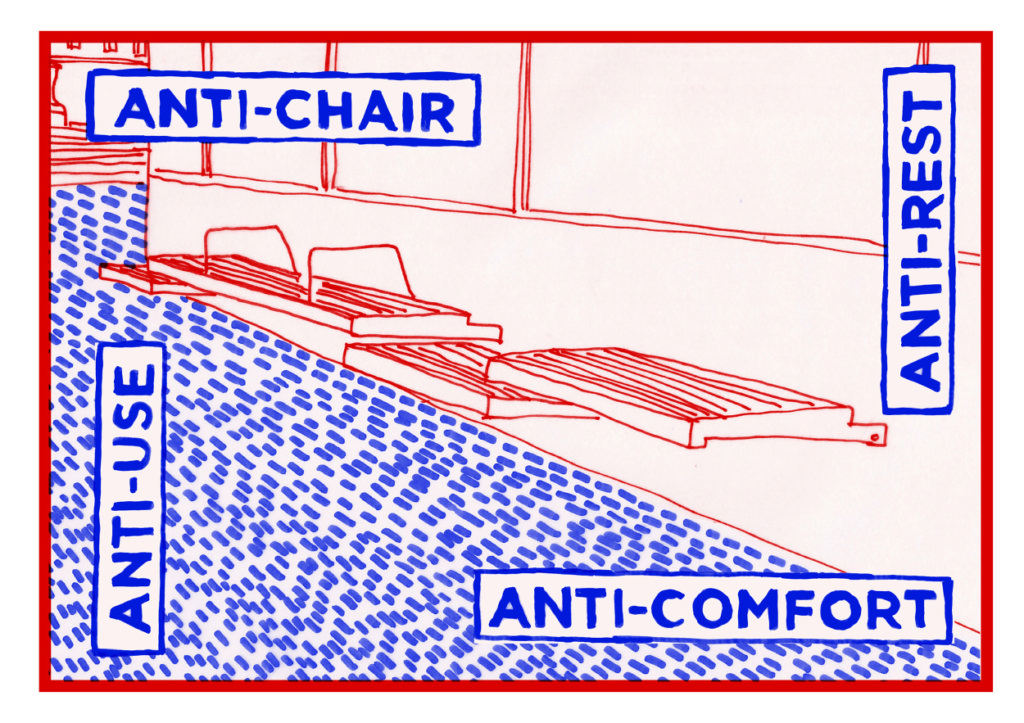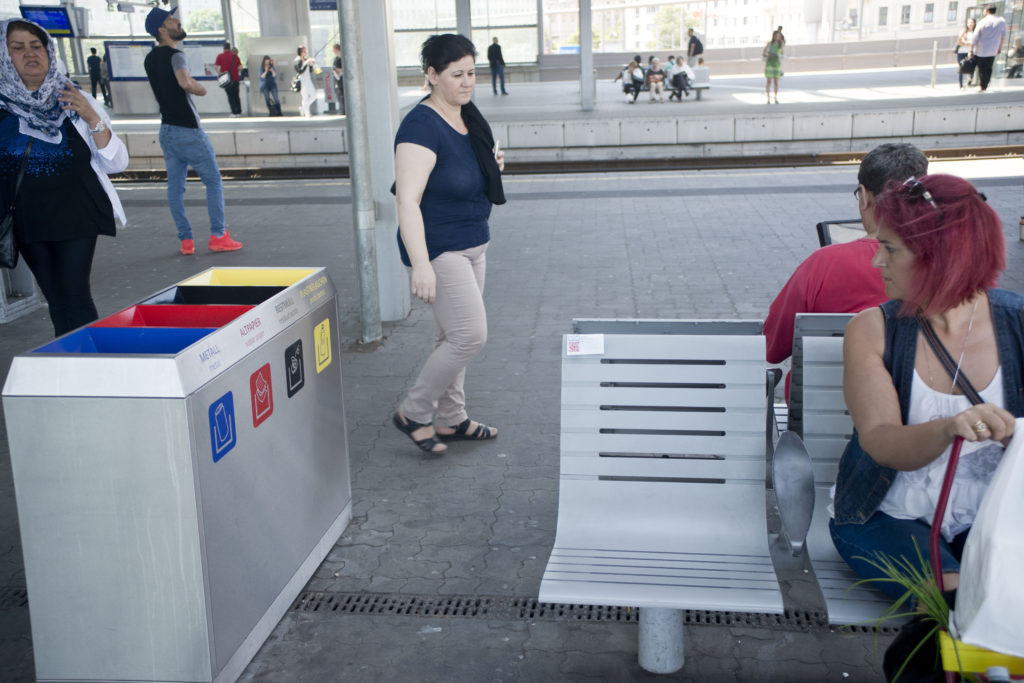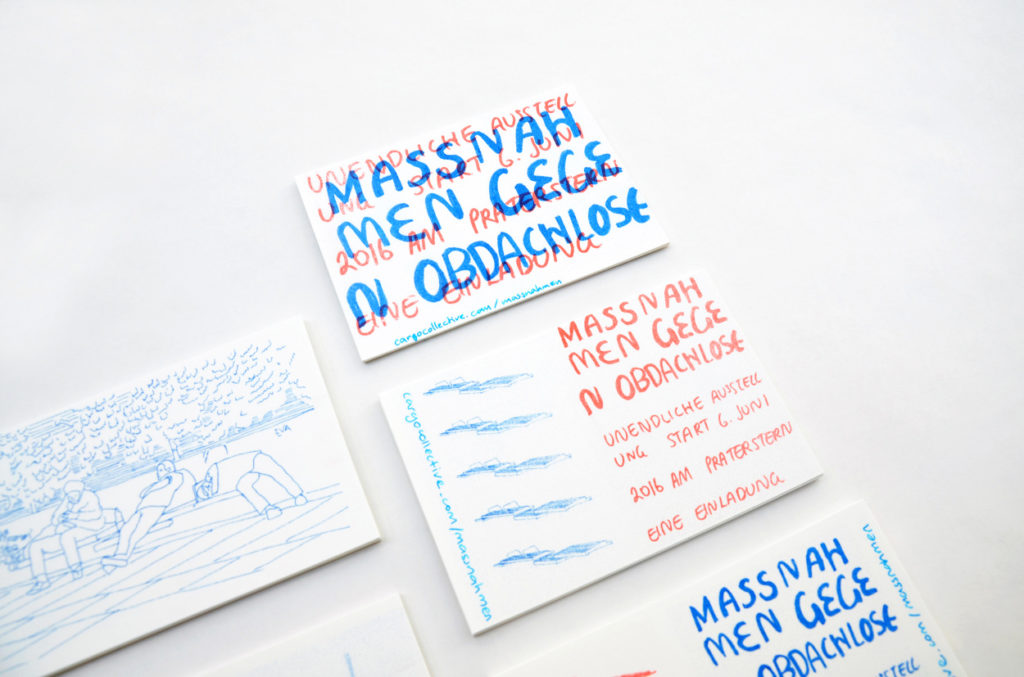Designs Against the Homeless
cargocollective.com/massnahmen
Deterrent designs are, simply defined, tools used to control social behaviour and conduct in public or semi-public spaces. They are also referred to as unpleasant designs or defensive architecture.
More and more do we witness deterrent designs being implemented in our urban spaces to control social behaviour and conduct. While understanding that a certain level of control is needed to cohabitate harmoniously, how much control is too much control? Where do we find a balance between individual freedom on one end and excessive control on the other?
The never-ending exhibition “Designs against the Homeless” at Praterstern Vienna, Austria explores the varied, intentional strategies taken by city authorities to deter the homeless (usually away from commercial city centers). Using a diversity of form and materiality, the works pick apart conventional control methods such as police watch to a more indirect approach that considers urban furniture, light, sound and new technology. The designs that will be exhibited already exist at the station. These include public benches, bins, CCTV cameras and more.
Parts of the exhibition are the exhibition guide and tags of “art citations” on the deterrent designs that are “on display”. These mark the turning point where an ordinary everyday object become an art object. The citations directly confront the public and users of the deterrent designs to the topic leaving them surprised, bewildered and often curious.
These materials are accompanied also with a website and social media networks, where people could find more information and join sharing the examples on social networks under the hashtag #designsagainstthehomeless.
This project is an artistic response to deterrent designs. It attempts to raise awareness of these designs by decoding top-down processes in order to reread the city and to initiate a dialogue with the general public on the design of our urban environments, raising questions concerning the inclusion and exclusion of particular groups in society and design for comfort or discomfort.








Thank you for sharing this critical project, allowing us to look at what most people generally avoid looking at. You say you want to “initiate a dialogue with the general public”; how has that worked out? Has this type of intervention and action worked well as a method to trigger such dialogues? Do you have any documentation of such dialogues? Have you included the homeless themselves in such conversations?
Hi Pablo, thanks for your comment. Our main methods on initiating a dialogue with the public included handing out the exhibition guides to the public in public spaces and using social media such as Facebook and Instagram. So far most of our dialogues happened in public. When we gave people the exhibition guides, we initiated an exchange and people felt comfortable to comment on, ask about our project and discuss the topic with us. Some of the dialogues also included the homeless as we gave them the exhibition guides too. Unfortunately we didn’t make any documentation of this. This is a good suggestion for next time.
Thank your for your answer Virginia. I think it’s interesting using different fora for expanding on these urgent dialogues. But surely there must be some trace of such dialogues on social media, no? But even if not, it is perhaps interesting to think of different ways to ‘represent’ such dialogues: you are already making use of sketches in your project, why not create a sort of graphic novel / story of how did those dialogues unfolded? Just a loose idea.